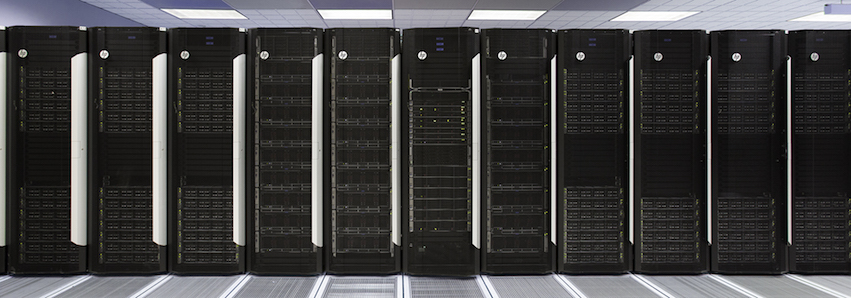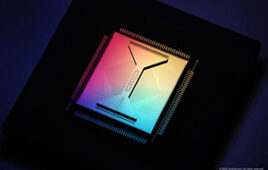
(Image: Courtesy of the Pittsburgh Supercomputing Center)
PSC’s groundbreaking Bridges supercomputer will provide value to the research community for an additional year, extending operations through November 2020, thanks to $1.9 million in added operational funding from the National Science Foundation (NSF). The new award, which will fund mostly staff positions, brings the total funding for Bridges to over $19 million. NSF awarded the original grant for Bridges to begin in December 2014.
Bridges converges high-performance computing (HPC), artificial intelligence (AI), and Big Data. It is a user-friendly platform that enables academic experts in fields that traditionally have not used HPC, such as genomics, artificial intelligence, neuroscience, economics and urban planning, to harness scalable computing to address their data-intensive challenges. To support these “new community” users, Bridges emphasizes interactivity and runs popular software packages such as Python, Jupyter, TensorFlow, R, Spark and databases, as well as hundreds of other software applications. Bridges supports containers and virtual machines (VMs), and it hosts “gateways” that democratize access by providing intuitive, domain-specific interfaces to applications, data, and computing. Bridges also supports “traditional” computations in fields like chemistry, biology and engineering.
Examples of breakthroughs already enabled on Bridges include analysis of the effects of extended space travel on the human genome in the NASA Twins Study, the first time an AI algorithm surpassed human experts’ ability for strategic reasoning and machine learning-driven discovery of new materials with applications in catalysis and energy.
Bridges is available at no charge for open research and by arrangement to industry. It integrates nearly 29,000 CPU cores, 128 advanced GPUs to accelerate AI, 274 terabytes of RAM with individual nodes having up to 12 terabytes of RAM each and 17 petabytes of data storage. Those capacities represent 7,250 times more CPU cores, 8768 times more aggregate RAM, 384 times more RAM per node and 8704 times more storage than a high-end laptop. Bridges’ qualitatively greater capability encourages scientists and engineers to transcend the artificial limits imposed by their local resources, instead creatively planning and executing analyses to advance the frontier of knowledge and improve the way we live and work.



